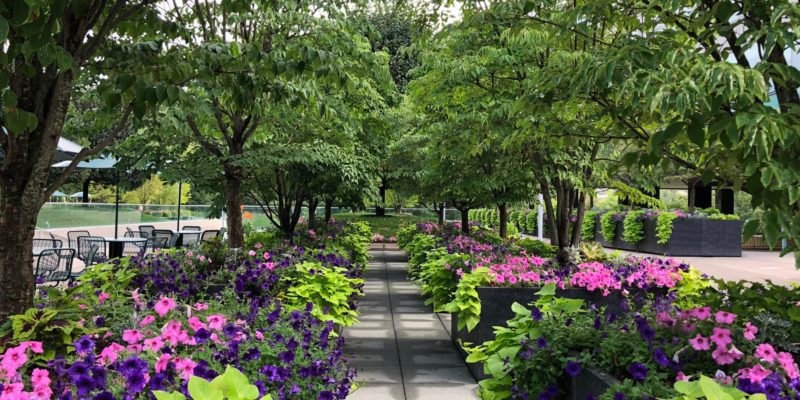In early 2006, if we were to tell you that your lawn would be mowed by a robot, that the cloud was not a delivery system for rain, and that your sprinklers would be controlled by your iPhone, you would have said, ‘what’s an iPhone?’
Because in 2006, the device used by more people in the world than any other, did not exist.
Thirteen years ago, when Apple introduced its smartphone, even the most progressively imaginative among us failed to imagine that a pocket-sized digital tool would have the power to change the nature of our lives and create a boundary-less generation of professionals that could work from anywhere.
Big data, the internet of things, automation, video conferencing, smart technologies and collaborative platforms are, today, all part of landscaper’s tool kit.
Here are three ways we’re using those tools to partner with commercial real estate professionals to drive continuous improvement.
Making outdoor space the new value-add.
Park-like settings, green spaces, shade tree allées and trails – the functionality of a facilities’ exterior landscaped footprint – are being re-configured to accommodate socialization, benefit health and safety, and create a new way of working and learning outside.
As schools move classrooms outdoors, restaurants expand patios, and health care promotes the therapeutic value of healing gardens, property and facility managers are also looking for opportunities to use outside space as an amenity that can contribute to the wellbeing of their workforce, as well as drive tenant retention.
Our landscape upgrade strategies deliver long term benefits in quality and flexibility, both in use and configuration, with smart technologies to enhance connectivity, and the revitalization of plant material to promote biodiversity and drought tolerance.
Optimizing pedestrian flow as the new outdoor amenity.
Pathways, border areas and buffer zones, plazas, walking corridors, sidewalks, bridge crossing, corners, lighting – landscaping is one of the best ways to control pedestrian flow and safety.
From proper grading and drainage to hazard management, flow is more than social distancing. Having sufficiently wide, clear pedestrian paths that minimize risk and public space that’s risk free is a security priority. Especially in winter.
Prioritizing green tech as the new way forward.
Being ‘green’ gives property/facility owners and managers a number of ways to save on landscape costs due to tax breaks, incentives or others credits provided by utility companies or federal or state governments.
And because landscaping is more about the environment than ever, building green tech into landscape’s infrastructure not only qualifies for LEED and green credits, but offer solutions that contribute significant savings to bottoms lines.
From corporate Class A to outdoor classrooms, increasingly sophisticated landscape technologies, biodegradable sanitation and smart sensors are changing the way properties become eco-friendly, energy-efficient and sustainable. These include, innovations in stormwater management, green roofs, water conservation programs, rain gardens and bioswales.
ELM is not only leading improvements in commercial outdoor space, but building a better platform for service through enhanced communication, accelerated response and delivery, and aerial mapping for site improvements.
To learn more, contact ELM President, Bruce Moore Jr @ 203-316-5433.

